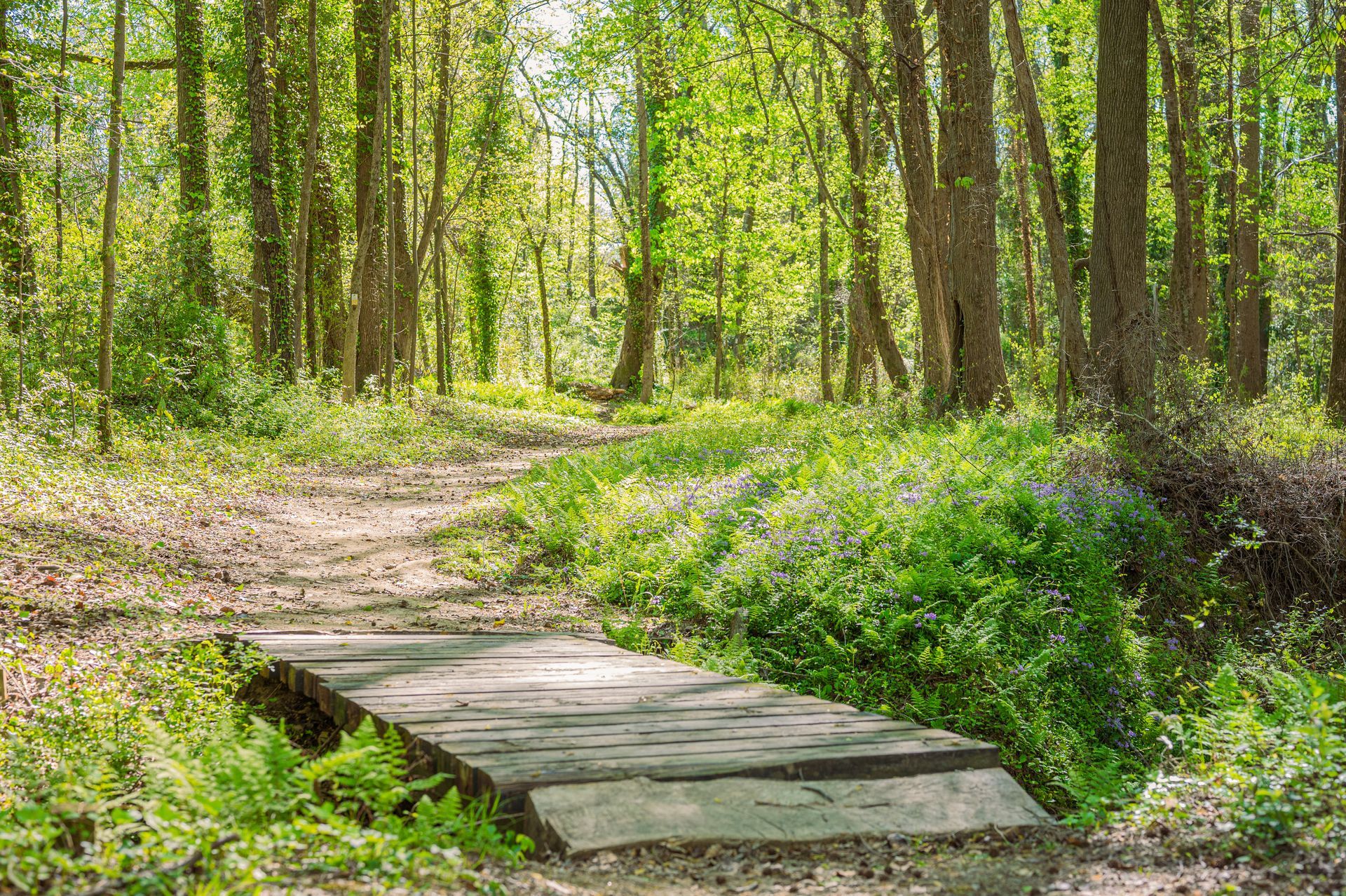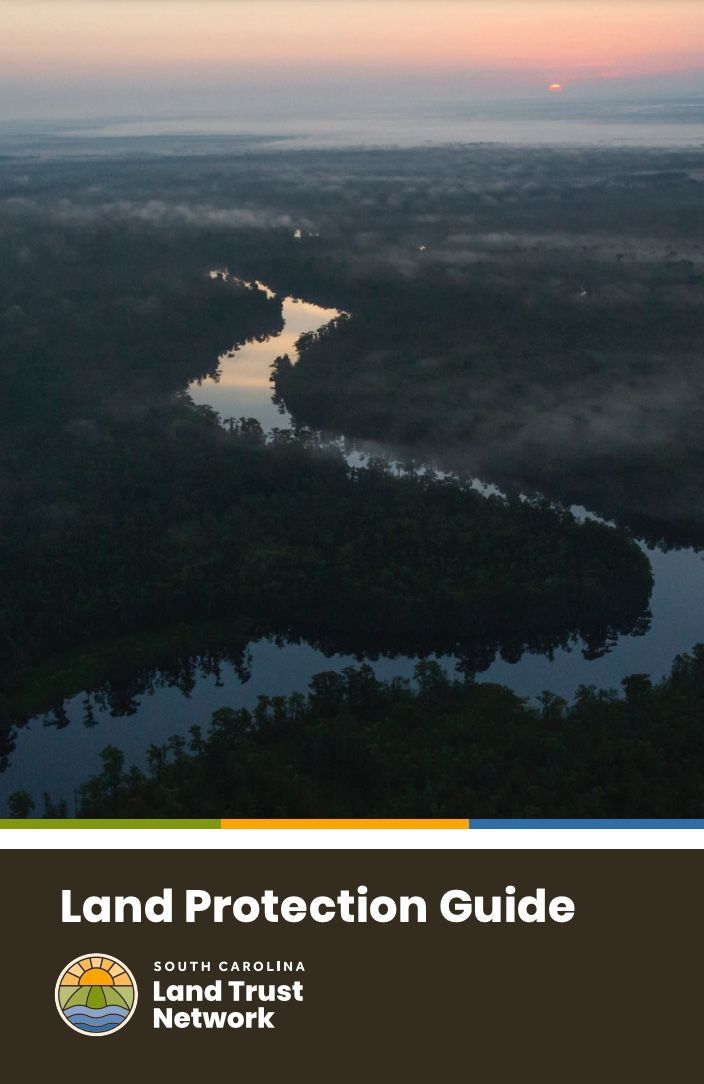
LANDOWNERS
Conservation Easement
Conservation easements are the most commonly used tool for land protection South Carolina. A conservation easement is a voluntary legal agreement between a landowner and a qualified land trust that permanently limits undesirable uses on a property in order to protect specific conservation values identified in the easement
(see below).

Slide title
Upper Chinquapin Greenway Trail, protected by Spartanburg Area Conservancy. Credit: Deb Stevens
Button
Conservation easements typically prevent land uses such as residential subdivisions, commercial or industrial operations, and mining, while allowing you to continue to use your land for traditional rural uses, such as farming, grazing, hunting, and timbering.
A conservation easement is a permanent legal document with possible financial and tax implications. It’s important to seek counsel from a Certified Public Accountant, appraiser, and attorney who have experience with conservation easements.
"My mother called me to her dying bed and asked me not to let the doors of Soapstone Baptist Church close. I met with Upstate Forever, and they saw the beauty and history there. They have helped us to preserve the grounds and all the beauty that lies there."
Mable Owens Clarke, Matriarch of the Soapstone Baptist Church protected in 2022
FAQs
Credit: Land Trust Alliance
What is a land trust?
A land trust is a nonprofit organization that, as all or part of its mission, actively works to conserve land by acquiring land or conservation easements (or assisting with their acquisition), and/or stewarding/managing land or conservation easements.
What is a conservation easement?
A conservation easement is a voluntary legal agreement between a landowner and a land trust or government agency that permanently limits uses of the land in order to protect its conservation values. Landowners retain many of their rights, including the right to own and use the land, sell it and pass it on to their heirs.
What are the benefits of conservation easements?
Conservation easements allow people to protect the land they love. They are the number one tool available for protecting privately owned land. All conservation easements must provide public benefits, such as water quality, farm and ranch land preservation, scenic views, wildlife habitat, outdoor recreation, education, and historic preservation.
How does a conservation easement restrict the use of the land?
That depends on what you’re trying to protect. If you’re placing land under easement, you can work with your land trust to decide on terms that are right for the land and right for you.
For example, if it’s important to you to be able to build a home on the land or to subdivide your property, you may be able to reserve those rights—as long as you’re still protecting important conservation values (such as productive farmland or wildlife habitat). You can use an easement to protect your whole property or part of it.
While every easement is unique, there are a few general rules. Farming and ranching are usually permitted. Development is almost always limited. Surface mining is almost always off-limits. While some easements require public access, many do not.
Can I sell a conservation easement?
Most conservation easements are donated. But if your land has very high conservation value, your land trust may be willing to raise funds to purchase an easement. In particular, a number of federal, state, and local programs provide funding to purchase easements on farm and ranch land.
Can a conservation easement reduce my income taxes?
A conservation easement donation can result in significant tax benefits, if it meets the requirements of federal law. It may lower your federal income tax, because you can claim the value of the easement as a tax-deductible charitable donation. It may also lower your state income tax, depending on your state laws.
Can a conservation easement help with estate planning?
Yes. Often, one of the biggest advantages of a conservation easement is that it helps you pass on your land to the next generation. A conservation easement helps you plan for the future of the land and it can significantly lower your estate taxes.
Are conservation easements permanent?
In most cases, yes. Most easements "run with the land,” meaning that all not only the original owner but all owners that come after them are subject to the easement. A few conservation programs use temporary easements—but only permanent conservation easements qualify for income and estate tax benefits.
How much land is protected by conservation easements?
More every year! Conservation easements are becoming very popular, in part because of their flexibility working with landowners to achieve their goals. As of 2020, more than 20 million acres in the United States were protected by state and local land trusts through conservation easements. In South Carolina, more than a million acres of privately-held land are under conservation easements. Learn more here.
What is the role of the land trust?
It’s the land trust’s job to make sure that the restrictions described in the easement are adhered to. To do this, the land trust monitors the property annually. The land trust will work with you and all future landowners to make sure that activities on the land are consistent with the easement. If necessary, the land trust is responsible for taking legal action to enforce the easement.
Find a Land Trust
Use our online directory to meet our members and find a land trust on your own,
or
Send us a few details and our knowledgable staff will direct you to the available Trust(s) that best align with your needs.
Website design and development made possible by

Website made possible by a grant from


